Hands on Activities


The Physics Department’s QUASAR group has organized a series of interactive workshops on particle acceleration for teenagers at the Cockcroft Institute, in Daresbury Laboratory (Cheshire).
Hundreds of children from seven local schools have taken part in eight workshops between June 2016 and January 2017. The projects, funded by the Royal Academy of Engineering and the STFC, have given the children the opportunity to learn about the practical applications of particle accelerators in society, while testing their experimental skills, finding out about careers in science… and having an amazing time!
The workshop started with an enthusiastic talk by Prof Carsten Welsch, Head of the Physics Department and Leader of the QUASAR Group, about important key areas of accelerator science, which included medical applications (OMA), antimatter research (AVA) and research at the Large Hadron Collider and its upgrades.
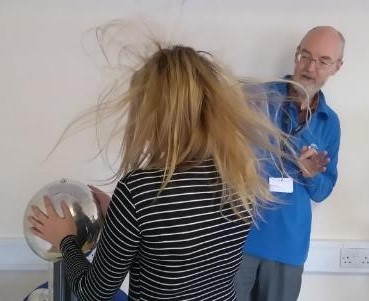
Afterwards, the children had the unique opportunity to mingle with research scientists and attend demonstrations with a Van de Graaff Generator, a Gauss rifle and rail guns, before getting their hands dirty by building their own ‘salad-bowl-accelerators’ and doing experiments on homopolar motors.
They also had the chance to record their experience in short videos, which were shown at the end of the day together with a poster presentation about their work. Seeing their enthusiasm, it wouldn’t be surprising to see them going back to Daresbury in a few years-time… as professional scientists.
Dr Ricardo Torres, workshop organiser and project manager at the Cockcroft Institute says “It was very rewarding to see the students working in teams alongside world-class researchers and enjoying the experimental work. You could see their sense of achievement and amazement when they got the little accelerators working.”
Two summary videos of the workshops can be watched on YouTube: Video1 & Video2

The Physics Department’s QUASAR group has produced a series of short videos explaining how to build some simple experiments related to electromagnetism and accelerator science with household materials. These include a home-made Van de Graaff generator, a salad bowl accelerator, a rail gun, and a dc and homopolar motors.
The videos, now on YouTube, have been funded by the Royal Academy of Engineering and the STFC as part of a project to bring school children closer to the science and engineering of particle accelerators.
Visit the links below to explore and learn more:
Electromagnetism in motion shows you how to build an electric motor in less than ten minutes, using simple materials. You can impress your friends while learning the same basic concepts of electromagnetism that power the most sophisticated particle accelerators.
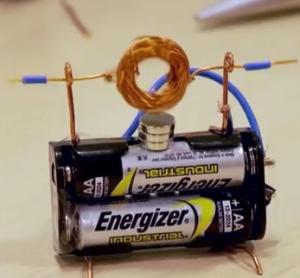
Primitive particle accelerators used Van de Graaff generators to create the enormous electric potentials that are needed to provide particles with enough energy to split the atom. You can now emulate the likes of Cockcroft and Walton by building your own Van de Graaff generator with household materials. It probably won’t split the atom but it will certainly give you a shock!
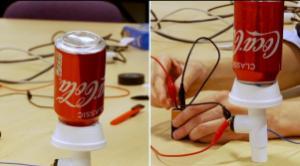
A circular collider in the kitchen shows how to build step by step a “salad bowl accelerator”. This easy-to-make device produces amazing results, demonstrating the accelerating power of the electrostatic potential.
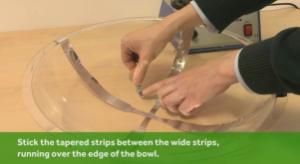
The rail gun is one of the most astonishing demonstrations of the power of electromagnetism. Scaled-up versions of the rail gun have been tested by the military to propel projectiles to supersonic speeds. A new video released by the University of Liverpool’s Quasar group shows how to build one with basic materials. While being perfectly safe, it provides good entertainment and demonstrates the underlying principles of particle accelerators.
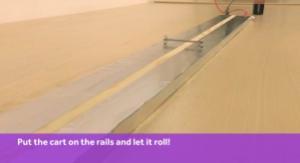
The World’s Simplest Motor shows how to build an electric motor in less than two minutes with just a copper wire, a battery, a magnet and a pair of pliers. The homopolar motor, first demonstrated by Faraday, is amazing for its simplicity and it’s sure to offer good entertainment to kids and grown-ups alike.
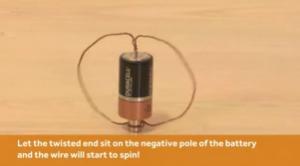
Van de Graaff generators produce high voltages by accumulating electric charge in a metallic sphere. Large Van de Graaff generators were used in the old days of particle accelerators to create the enormous potentials needed to accelerate the particles to high energies. Nowadays they are mostly used in science museums to demonstrate the phenomenon of static electricity. You can build your own Van de Graaff generator with household materials.
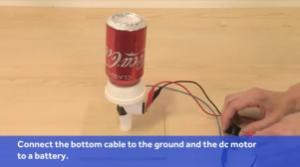

The University of Liverpool’s Quasar group has released on YouTube two official videos of their Workshops on Accelerator Science and Engineering.
Pupils attending the workshop visit the Cockcroft Institute with their teachers to enjoy a day of experimental demonstrations on electromagnetism and mingling with world-class accelerator scientists.
The students were given the task of building a series of machines that demonstrate the basic principles of particle accelerators. While learning the importance of accelerators in science and society, they had the chance to test their experimental skills and consider the prospect of pursuing a career in engineering.
The first was held on 15th June 2016, and was attended by 46 Year 10 students from Helsby High School, Frodsham. (See the video below)
The project was funded by the Royal Academy of Engineering through the Ingenious Award scheme.
The second was held on 14th July 2016, and was attended by 54 Year 9 students from Shevington High School, Wigan. (See the video below).
The project was funded by the Science and Technology Facilities Council through the Public Engagement Small Award scheme.

Call the department
Student Enquiries +44 (0)151 794 3351 General Enquiries +44 (0)151 794 3358